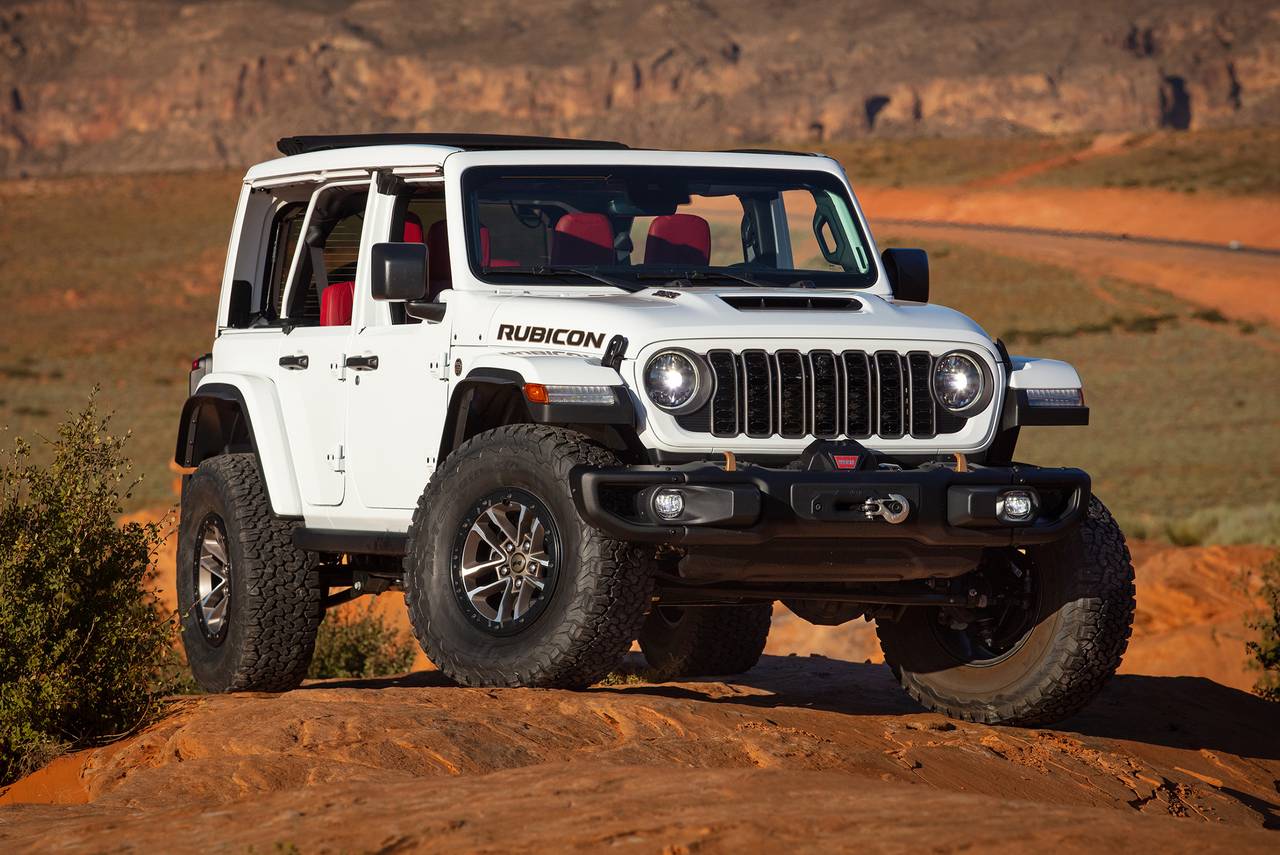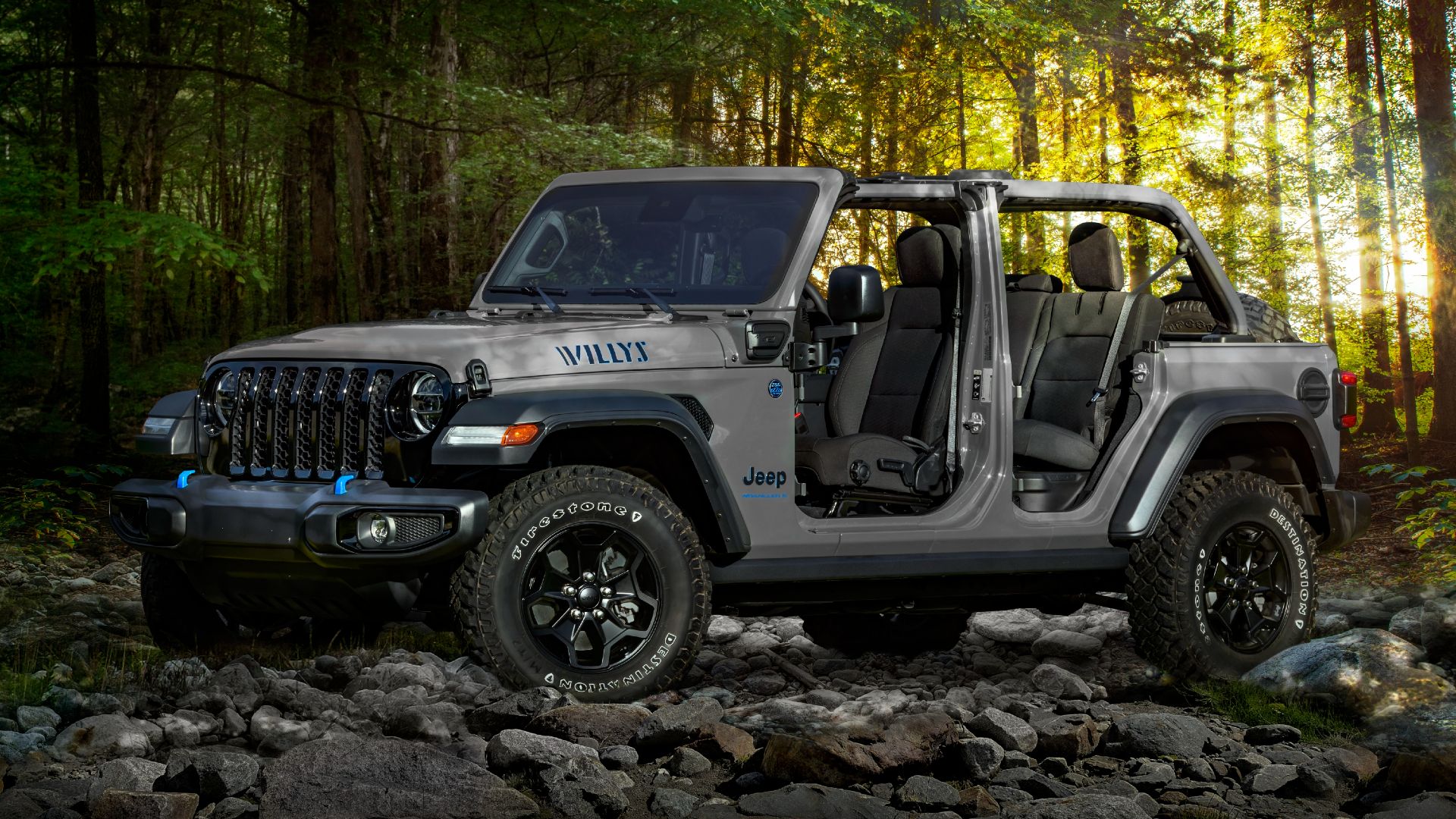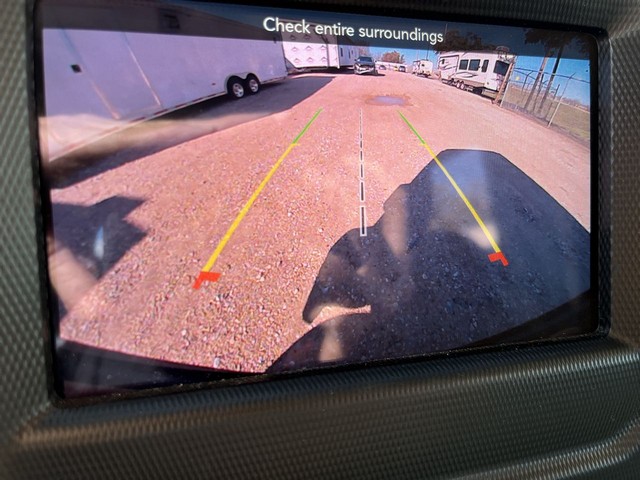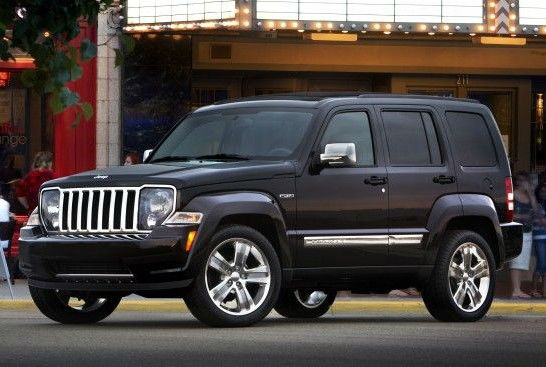Jeep Cherokee 4×4: An Enduring Icon of Versatility and Capability
Jeep Cherokee 4×4: An Enduring Icon of Versatility and Capability jeeps.truckstrend.com
The name "Jeep Cherokee" evokes images of rugged exploration, unwavering reliability, and a spirit of adventure. For decades, the Jeep Cherokee 4×4 has stood as a testament to American engineering and a symbol of off-road prowess combined with everyday practicality. More than just a vehicle, it represents a legacy of conquering challenging terrains while offering a comfortable ride for daily commutes. From its revolutionary unibody design that redefined the SUV segment to its modern iterations packed with advanced technology, the Jeep Cherokee 4×4 has consistently delivered on its promise of all-weather, all-terrain capability, cementing its importance as a versatile and enduring choice for adventurers and families alike.
This comprehensive guide delves into the multifaceted world of the Jeep Cherokee 4×4, exploring its history, the intricate mechanics of its four-wheel-drive systems, its benefits, key considerations for ownership, and practical advice to help you navigate its rich heritage.
Jeep Cherokee 4×4: An Enduring Icon of Versatility and Capability
A Legacy of Capability: Understanding the Jeep Cherokee 4×4’s Evolution
The Jeep Cherokee’s journey began in 1974, but it was the XJ generation (1984-2001) that truly cemented its legendary status as a compact SUV. Revolutionary for its time, the XJ pioneered the unibody construction in an SUV, making it lighter, more fuel-efficient, and car-like to drive than traditional body-on-frame competitors, without sacrificing its formidable off-road capabilities. Its distinct, boxy silhouette became instantly recognizable and remains highly sought after by enthusiasts today.
Following the XJ, the KJ generation (Liberty in North America, 2002-2007) introduced a more rounded, modern aesthetic and improved on-road manners, while still offering robust 4×4 systems. The KK generation (2008-2012) continued this evolution with updated styling and enhanced safety features.
The most recent iteration, the KL generation (2014-2023), brought a significant departure in design and engineering. Built on a car-based platform, the KL Cherokee offered a more refined ride, advanced infotainment, and a range of sophisticated 4×4 systems tailored for both mild trail use and serious off-roading, particularly in its Trailhawk trim. While the Cherokee nameplate has seen its final production run in North America as of 2023, its legacy and the abundance of capable 4×4 models on the used market ensure its continued relevance.
The Heart of the Beast: Jeep Cherokee 4×4 Systems Explained
The "4×4" in Jeep Cherokee signifies its ability to deliver power to all four wheels, enhancing traction and control across diverse surfaces. Over its generations, the Cherokee has employed several distinct four-wheel-drive systems, each designed for specific purposes:
- Command-Trac (Part-Time 4WD): Predominantly found in the XJ, KJ, and KK generations, this system offers 2WD High, 4WD High, and 4WD Low.

- 2WD High: Power is sent only to the rear wheels for everyday driving on dry pavement, optimizing fuel efficiency.
- 4WD High: Distributes power equally to all four wheels for increased traction on slippery surfaces like snow, dirt, or gravel. It should not be used on dry, paved roads as it can cause "driveline binding" due to the lack of a differential between the front and rear axles.
- 4WD Low: Engages a lower gear ratio in the transfer case, multiplying torque for maximum pulling power and control in extreme off-road situations like rock crawling, steep ascents/descents, or deep mud.
- Selec-Trac (Full-Time 4WD): Also common in the XJ, KJ, and KK, this system adds a "Full-Time 4WD" mode.
- Full-Time 4WD: Allows for the use of 4WD on any surface, including dry pavement, because it incorporates a differential within the transfer case that accommodates speed differences between the front and rear axles. This makes it ideal for varying weather conditions without needing to switch modes.
- Part-Time 4WD High/Low: Similar to Command-Trac, these modes lock the front and rear axles together for maximum traction when needed, suitable only for loose surfaces.
- Active Drive I (KL Generation): A fully automatic 4×4 system that seamlessly engages 4×4 when traction is lost. It’s designed for improved all-weather performance and light off-roading.
- Active Drive II (KL Generation): Builds upon Active Drive I by adding a low-range gear for enhanced off-road capability and greater crawling power.
- Active Drive Lock (KL Trailhawk): The most capable 4×4 system in the KL lineup, exclusive to the Trailhawk. It includes Active Drive II’s low-range and adds a mechanical rear locker for maximum traction in extreme off-road scenarios, allowing both rear wheels to spin at the same rate.

![]()
Understanding these systems is crucial, as they dictate the Cherokee’s capabilities and how it should be operated to ensure longevity and safety.
Beyond the Pavement: Off-Road Prowess and Practicality
The inherent design of the Jeep Cherokee 4×4, particularly its 4×4 systems, provides a multitude of benefits:
- Unmatched Traction: Whether navigating snowy roads, muddy trails, or sandy dunes, the ability to distribute power to all four wheels significantly enhances grip and prevents getting stuck.
- All-Weather Confidence: For regions experiencing heavy rain, snow, or ice, a 4×4 Cherokee offers superior stability and control, making daily driving safer.
- Off-Road Exploration: With varying degrees of ground clearance, robust suspension, and specific 4×4 modes (especially 4WD Low), Cherokees are adept at tackling challenging terrain, from forest trails to rocky paths. The Trailhawk trim, in particular, comes "Trail Rated," signifying its proven capability in five key areas: traction, ground clearance, maneuverability, articulation, and water fording.
- Towing Capability: Many 4×4 Cherokee models offer respectable towing capacities, making them suitable for hauling small boats, campers, or utility trailers. The enhanced traction of 4×4 can also aid in launching boats on slippery ramps.
- Resale Value: Due to their reputation for durability and capability, many Jeep Cherokee 4×4 models, especially well-maintained XJs and Trailhawks, tend to hold their value well.
Choosing Your Adventure: Key Considerations When Buying a Jeep Cherokee 4×4
Deciding which Jeep Cherokee 4×4 is right for you involves weighing several factors:
- Generation:
- XJ (1984-2001): The classic choice for purists and serious off-roaders. Simple, durable, and vast aftermarket support. Be prepared for potential rust and older tech.
- KJ/KK (2002-2012): More refined than the XJ, with improved safety and comfort features. Still very capable off-road.
- KL (2014-2023): Modern, comfortable, and technologically advanced. Offers a car-like ride. The Trailhawk trim is the most off-road oriented.
- Engine Options: The legendary 4.0L inline-six (XJ) is known for its bulletproof reliability and torque. Later generations offer V6 engines (3.7L, 3.2L) and efficient 4-cylinders (2.4L, 2.0L Turbo). Match the engine to your expected use (e.g., the 4.0L is great for off-roading, the 2.0L Turbo offers a good balance of power and efficiency for the KL).
- 4×4 System: Crucially, understand your primary use. If you need a daily driver for all-weather conditions with occasional light trail use, a full-time system like Selec-Trac or Active Drive I/II is excellent. For dedicated off-roading, Command-Trac or Active Drive Lock (Trailhawk) with low-range and a locker is preferable.
- Condition & Maintenance History: Especially for older models, a thorough pre-purchase inspection is vital. Check for rust (common on XJs), fluid leaks, transmission health, and signs of off-road abuse (dents, bent components).
- Aftermarket Support: The XJ has an enormous aftermarket for modifications and parts, making it a popular choice for customization. The KL Trailhawk also has a growing aftermarket.
Maintaining Your Trail Companion: Tips for Longevity and Performance
Proper maintenance is key to ensuring your Jeep Cherokee 4×4 remains a reliable and capable vehicle:
- Regular Fluid Checks: This includes engine oil, transmission fluid, coolant, power steering fluid, and crucially, transfer case and differential fluids. These 4×4 components need clean, correctly specified lubricants.
- Tire Management: Maintain correct tire pressure and rotate tires regularly. For off-roading, consider All-Terrain (A/T) or Mud-Terrain (M/T) tires and adjust pressure for specific conditions (airing down for sand/rocks).
- Suspension Inspection: After off-roading, check for bent components, damaged bushings, or leaky shocks.
- Underbody Check: Inspect the undercarriage for any damage to skid plates, exhaust, or driveline components after challenging trails.
- Understanding 4×4 Engagement: Never use part-time 4WD (4WD High or 4WD Low) on dry, paved surfaces. This can cause "driveline binding" and severe damage to the transfer case or axles. Only engage these modes when traction is compromised.
- Addressing Common Issues: Be aware of known issues for your specific generation (e.g., "Death Wobble" in some XJs, electrical issues in KJs, certain transmission quirks in early KLs) and address them proactively.
Common Challenges and Solutions
While robust, Jeep Cherokee 4x4s can present specific challenges:
- Fuel Economy: Older XJ models with the 4.0L engine are not known for their fuel efficiency. Newer KL models are better, but 4×4 adds weight and driveline drag.
- Solution: Regular maintenance, proper tire pressure, and conservative driving habits can help.
- Rust (XJ): Frame rails, floorboards, and rocker panels are common rust spots on XJ Cherokees, especially in colder climates.
- Solution: Thorough pre-purchase inspection. For existing rust, address it promptly with grinding, rust converters, and protective coatings.
- "Death Wobble" (XJ/ZJ/WJ): A violent, uncontrollable shaking of the front end, typically above 45 mph, often caused by worn steering or suspension components.
- Solution: Inspect and replace worn track bars, tie rod ends, ball joints, and control arm bushings. A good alignment is also crucial.
- Maintenance Costs: While parts are generally affordable, 4×4 components (transfer cases, differentials, axles) can be costly to repair if neglected.
- Solution: Adhere to manufacturer-recommended maintenance schedules, especially for fluid changes in 4×4 components.
- Electrical Gremlins: Some generations, particularly the KJ, can experience various electrical issues (window motors, sensors).
- Solution: Professional diagnosis and using quality replacement parts.
Practical Advice and Actionable Insights
- Test Drive Multiple Generations: Experience the differences firsthand to determine which best suits your comfort and capability needs.
- Get a Pre-Purchase Inspection (PPI): For used models, invest in a PPI by a trusted mechanic, ideally one familiar with Jeeps.
- Understand Your Use Case: Be honest about whether you need a dedicated off-roader, an all-weather commuter, or a family adventure vehicle. This will guide your choice of generation and 4×4 system.
- Learn Your 4×4 System: Read your owner’s manual. Know when and how to engage/disengage different 4×4 modes to prevent damage.
- Join the Community: Online forums and local Jeep clubs are invaluable resources for advice, troubleshooting, and camaraderie.
Jeep Cherokee 4×4: Representative Price Guide
Please note: Prices for used vehicles vary wildly based on year, mileage, trim level, condition, maintenance history, geographical location, and current market demand. This table provides a general range for representative models and is not exhaustive for every trim or engine variant. New MSRPs are approximate and were applicable before the North American discontinuation of the KL.
| Model/Generation | Key Trims (4×4) | Engine Options | Typical Used Price Range (USD) | New MSRP Range (USD – Pre-discontinuation) | Key 4×4 System(s) | Notes |
|---|---|---|---|---|---|---|
| XJ (1984-2001) | Sport, Laredo, Limited, Country | 4.0L I6, 2.5L I4 | $3,000 – $15,000+ (for exceptional condition) | N/A (Discontinued) | Command-Trac, Selec-Trac | Legendary reliability, highly customizable for off-road. Condition is paramount. |
| KJ (2002-2007) | Sport, Limited, Renegade | 3.7L V6 | $4,000 – $10,000 | N/A (Discontinued) | Command-Trac, Selec-Trac | More refined ride than XJ, still very capable. Check for rust on subframe. |
| KK (2008-2012) | Sport, Latitude, Limited | 3.7L V6 | $5,000 – $12,000 | N/A (Discontinued) | Command-Trac II, Selec-Trac II | Updated styling, improved safety features over KJ. |
| KL (2014-2023) | Latitude, Altitude, Limited, Trailhawk, Overland | 2.4L I4, 3.2L V6, 2.0L Turbo I4 | $10,000 – $30,000+ (for recent years/low mileage) | $30,000 – $40,000+ | Active Drive I, Active Drive II, Active Drive Lock (Trailhawk) | Modern, comfortable, efficient. Trailhawk is the most off-road capable. |
Frequently Asked Questions (FAQ) about the Jeep Cherokee 4×4
Q1: What does "4×4" mean on a Jeep Cherokee?
A1: "4×4" means the vehicle has a four-wheel-drive system, allowing power to be sent to all four wheels simultaneously. This enhances traction and control, especially on slippery, loose, or uneven surfaces like snow, mud, gravel, or rocky terrain.
Q2: Is the Jeep Cherokee good off-road?
A2: Yes, the Jeep Cherokee, especially its 4×4 variants, is generally very good off-road. Older XJ models are legendary for their ruggedness and capability, while the modern KL Trailhawk trim is specifically designed and "Trail Rated" for serious off-roading, boasting features like a low-range gear, rear locker, and increased ground clearance.
Q3: Which generation of Jeep Cherokee is best for off-roading?
A3: For hardcore off-roading and a vast aftermarket, the XJ generation (1984-2001) is often considered the best due to its robust simplicity, solid axles, and extensive modification options. For modern comfort combined with significant off-road capability, the KL Trailhawk (2014-2023) is an excellent choice.
Q4: What’s the difference between Command-Trac and Selec-Trac?
A4: Command-Trac is a part-time 4WD system, meaning its 4WD modes (4WD High, 4WD Low) should only be used on loose or slippery surfaces. It lacks a differential between the front and rear axles. Selec-Trac is a full-time 4WD system, which includes a "Full-Time 4WD" mode that can be used on any surface, including dry pavement, because it has a differential that accommodates speed differences between the front and rear axles.
Q5: What is "Death Wobble" and how do I fix it?
A5: "Death Wobble" is a violent, uncontrollable shaking of the front end, primarily experienced in solid-front-axle Jeeps like the XJ Cherokee, usually at highway speeds. It’s caused by worn or damaged steering and suspension components (e.g., track bar, tie rod ends, ball joints, control arm bushings). Fixing it involves diagnosing and replacing the worn components, often starting with the track bar, and ensuring proper alignment.
Q6: Is the Jeep Cherokee reliable?
A6: Reliability can vary by generation and how well the vehicle has been maintained. The 4.0L inline-six in the XJ is renowned for its durability. Newer generations have more complex electronics, which can sometimes lead to issues. Regular maintenance, especially of 4×4 components, is crucial for any vehicle’s reliability.
Q7: Can I flat tow a Jeep Cherokee 4×4 behind an RV?
A7: Many 4×4 Jeep Cherokee models are capable of being flat-towed (all four wheels on the ground) behind an RV. However, it’s crucial to check your specific model’s owner’s manual for instructions on how to properly set up the transfer case (usually in "Neutral" mode) and any other requirements. Not all trims or 4×4 systems are designed for flat towing.
Q8: What is Selec-Terrain?
A8: Selec-Terrain is a system found on modern Jeep Cherokees (KL generation) that allows the driver to choose from various terrain modes (e.g., Auto, Snow, Sport, Sand/Mud, Rock on Trailhawk). These modes optimize the vehicle’s 4×4 system, throttle response, transmission shifts, and traction control for specific driving conditions, making off-roading easier and more effective.
Conclusion
The Jeep Cherokee 4×4 stands as a testament to capability, versatility, and an adventurous spirit. From the utilitarian charm and legendary ruggedness of the XJ to the modern comfort and advanced technology of the KL, each generation has contributed to the Cherokee’s enduring legacy. Whether you seek a reliable daily driver that can handle any weather, a weekend warrior for trail exploration, or a capable family vehicle, there’s a Jeep Cherokee 4×4 that fits the bill. By understanding its diverse 4×4 systems, acknowledging its unique characteristics, and committing to proper maintenance, you can ensure that your Jeep Cherokee 4×4 remains a dependable and thrilling companion for all of life’s adventures, both on and off the beaten path. Its iconic status in the automotive world is well-earned, a true symbol of freedom and go-anywhere capability.





